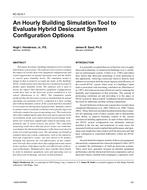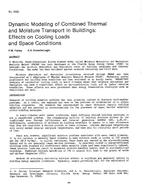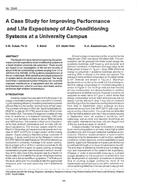As building occupants and local governments push for improved building energy efficiency, accurate and equitable benchmarking platforms are becomingincreasingly important. With several benchmarking options available, how do policy makers choose the right platform? Currently, the U.S. EPA’sENERGY STAR® Portfolio Manager tool is the most common platform used to establish a building’s energy performance. ASHRAE Standard100: Energy Efficiency in Existing Buildings, introduced in 2015 and updated in 2018, sets energy use targets to demonstrate compliance and presentsan alternative path for conditional compliance for those buildings that do not currently meet their targets.
This paper presents a comparison between the ENERGY STAR and Standard 100 benchmarking systems, using data from commercial officebuildings located in different climate regions throughout the US. The study finds that only a small fraction of the properties eligible for ENERGYSTAR certification are eligible for Standard 100 compliance. In general, the ENERGY STAR-eligible properties in the study require significantreductions in energy use in order to meet Standard 100 energy targets. Properties marginally eligible for ENERGY STAR certification, withENERGY STAR scores of 75 to 79, need to reduce their site EUI by 37% and source EUI by 44% to achieve Standard 100 energy targets.Meeting Standard 100 energy targets is significantly more difficult than achieving ENERGY STAR certification.
Citation: 2020 Winter Conference, Orlando, FL Conference Papers
Product Details
- Published:
- 2020
- Number of Pages:
- 8
- Units of Measure:
- Dual
- File Size:
- 1 file , 1.1 MB
- Product Code(s):
- D-OR-20-C035


